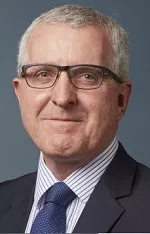Victoria's Minister for Environment, Lily D'Ambrosio, has recently announced that Victoria is planning to set up VicGrid, a new entity to oversee renewables connections in the State.
The move is likely to be welcomed by generators and investors seeking acceleration of much needed improvements in grid infrastructure, increased confidence in the connection process and continued access to grid after connection.
Delays in grid connection and associated financial losses incurred due to curtailment, congestion and transmission losses have been well documented. The latest edition of the Clean Energy Council's Clean Energy Outlook confidence index (December 2020) notes grid connection process issues as the greatest business challenge facing the development of clean energy projects in Australia. Recent reports released by the Energy Security Board have also highlighted the challenges facing the National Electricity Market (NEM) as a result of the increasing amount of renewable energy generation, as noted in a previous article.
Steps to resolve these challenges are essential as the pace of Australia's transition to clean energy shows no sign of slowing. There are already many projects waiting for connection and others in development which are expected to apply for connection in the near future.
In Victoria, the Australian Energy Market Operator (AEMO) has identified that a minimum of 13.2GW of renewable generation will be required by 2030 to meet the Victorian Renewable Energy Target (VRET). With approximately 7.8GW of existing or committed wind and solar generation, Victoria will need at least an additional 5.4GW of additional renewables investment to meet the VRET 1.
The creation of VicGrid is timely as it coincides with work the State is doing with AEMO to establish six new renewable energy zones (REZ) and expectations that it will shortly invite tenders for its second reverse auction (VRET2) for at least 600MW of new renewables generation in the State2. Grid access will be a key concern for generators who submit tenders in VRET2. The State's first reverse auction in 2018 was heavily over-subscribed and allocated support agreements to six projects totalling 928MW, however the winning projects struggled to get financing, in part due to grid concerns.
The recent announcement by Minister D'Ambrosio is another example of Victoria's willingness to 'go it alone' on energy reform. In 2020, the State asked AEMO to fasttrack an increase in the capacity of the Victoria-New South Wales interconnector, which resulted in the award of a contract for the 300MW/450MWh Victorian Big Battery, currently under construction near Geelong3.
The exact scope and function of VicGrid is not yet clear. Minister D'Ambrosio has said that this is under development and the Government will be seeking stakeholder feedback to shape this important new body. It remains to be seen how VicGrid is intended to interact with AEMO in the grid connection process. In Victoria, AEMO manages the connection process and acts as the main point of contact for connection applicants.
Although the details have yet to be worked through, any initiative to improve grid infrastructure and the connection process will be welcomed by all industry players seeking a catalyst to unlock further renewables development in Victoria.
Footnotes
1Available here.
2 Available here.
3 Available here.
The content of this article is intended to provide a general guide to the subject matter. Specialist advice should be sought about your specific circumstances.
 |
 |
| Chambers Asia Pacific Awards 2016 Winner
- Australia Client Service Award |
Employer of Choice for Gender Equality
(WGEA) |




